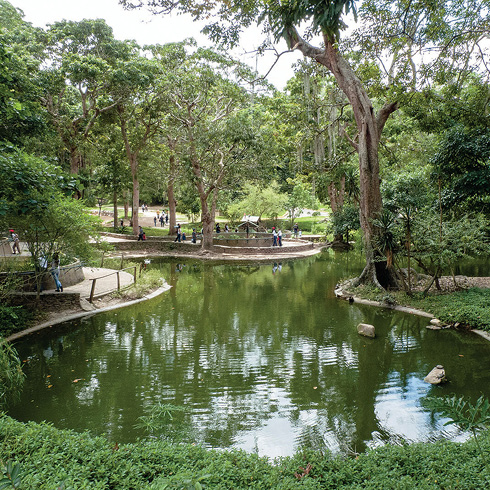GCM-1
Macarao was a mission village of Taramaina natives, founded in February 1621 with the name San Pedro y San Pablo, plotted by Gabriel Mendoza. The village is located on a narrow plateau and is one of the smallest historical town centers of Caracas. It is at the end of the route from El Paraíso. Shortly after its founding it was abandoned for the Antímano site, and later on was occupied by creole population. The semi-regular layout of straight streets is typical of the Caracas area mission villages, but the Plaza Bolívar is different as it is smaller and almost square. On the west side is the three-nave church Nuestra Señora del Rosario de Curucay, dating from 1740, and occupying the foundational religious place of the priest’s house and the cemetery. It was declared a National Historic Monument in 1960. There are still a few traditional mud houses in the town center, and on the outskirts of the town is one of the old houses of Bolívar’s sister María Antonia. The square has been remodeled recently, to include a plant wall that closed of one of the existing streets, enhancing what, in Graziano Gasparini’s expert opinion, is the church with the most beautiful interior in Caracas.

GCM-2

GCM-3



